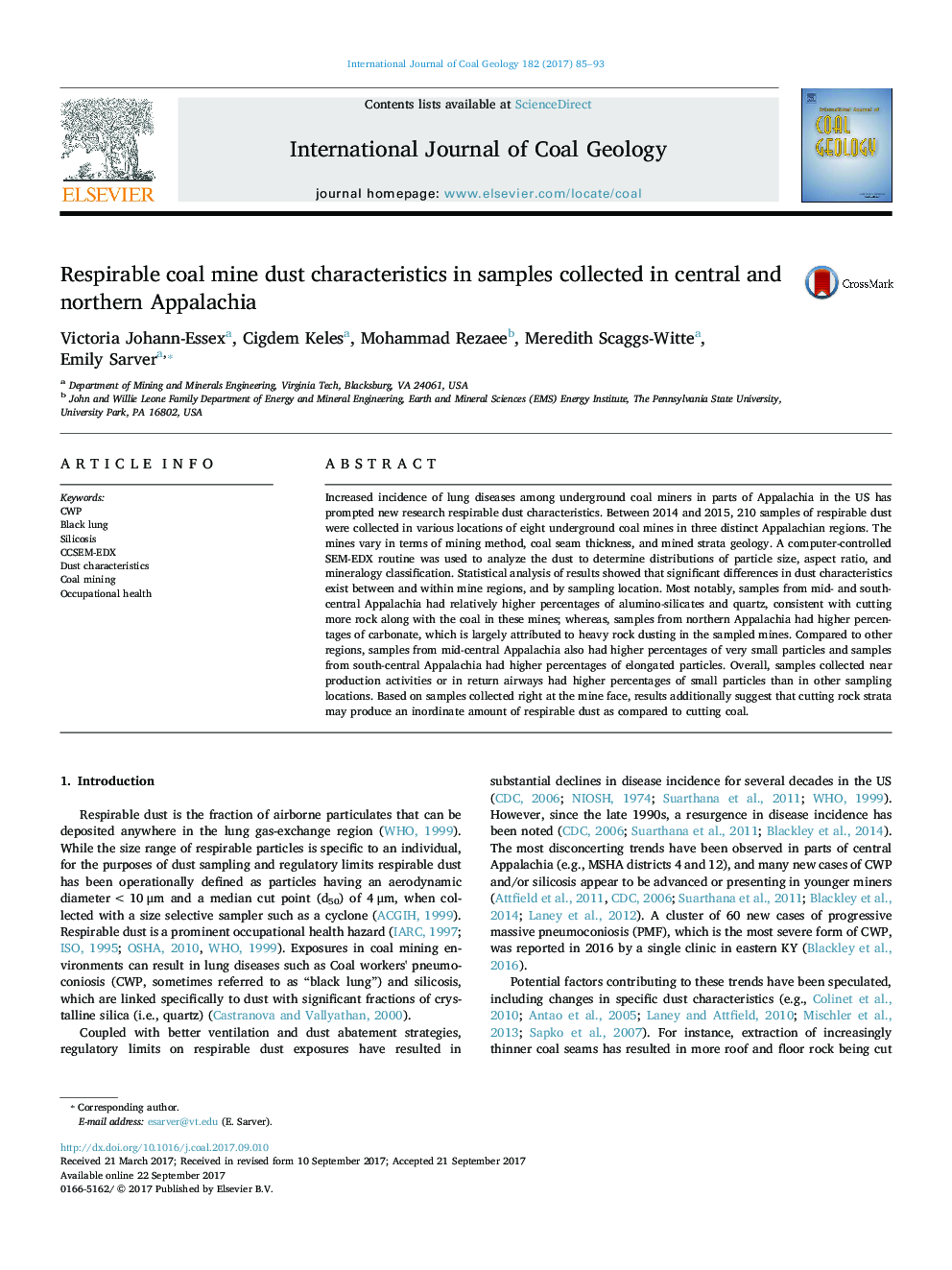| Article ID | Journal | Published Year | Pages | File Type |
|---|---|---|---|---|
| 5483559 | International Journal of Coal Geology | 2017 | 9 Pages |
Abstract
Increased incidence of lung diseases among underground coal miners in parts of Appalachia in the US has prompted new research respirable dust characteristics. Between 2014 and 2015, 210 samples of respirable dust were collected in various locations of eight underground coal mines in three distinct Appalachian regions. The mines vary in terms of mining method, coal seam thickness, and mined strata geology. A computer-controlled SEM-EDX routine was used to analyze the dust to determine distributions of particle size, aspect ratio, and mineralogy classification. Statistical analysis of results showed that significant differences in dust characteristics exist between and within mine regions, and by sampling location. Most notably, samples from mid- and south-central Appalachia had relatively higher percentages of alumino-silicates and quartz, consistent with cutting more rock along with the coal in these mines; whereas, samples from northern Appalachia had higher percentages of carbonate, which is largely attributed to heavy rock dusting in the sampled mines. Compared to other regions, samples from mid-central Appalachia also had higher percentages of very small particles and samples from south-central Appalachia had higher percentages of elongated particles. Overall, samples collected near production activities or in return airways had higher percentages of small particles than in other sampling locations. Based on samples collected right at the mine face, results additionally suggest that cutting rock strata may produce an inordinate amount of respirable dust as compared to cutting coal.
Related Topics
Physical Sciences and Engineering
Earth and Planetary Sciences
Economic Geology
Authors
Victoria Johann-Essex, Cigdem Keles, Mohammad Rezaee, Meredith Scaggs-Witte, Emily Sarver,
